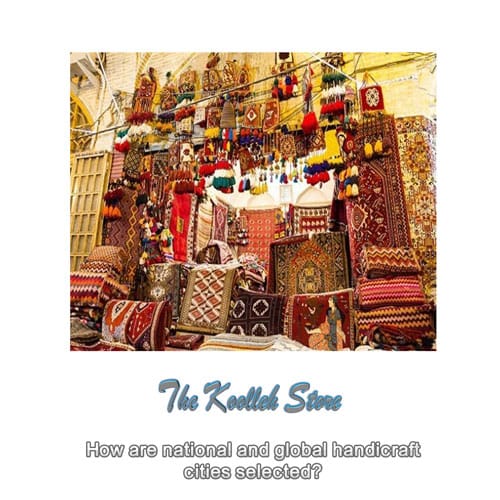How are national and global handicraft cities selected?

In recent years, we have witnessed the selection and introduction of national and global handicraft villages and towns. These cities are a symbol of the country’s culture and art at the national and international levels.
Although the selection and introduction of national and global handicraft villages and towns are positive steps to introduce our country’s culture and art as much as possible, some experts believe that due to the lack of specialized experts to evaluate the quality of handicraft products, we see low quality products. . Of course, this is partly due to the low capacity of these cities.
On the same pretext, we went to Vida Tawhdi, Advisor to the Deputy Minister of Handicrafts and Traditional Arts of the Cultural Heritage Organization, who is in charge of international affairs, in order to find out how to select villages and global cities for handicrafts.
Ms. Tohdi; How are national and global villages and towns selected?
We have criteria for selecting national and global cities in accordance with international standards and criteria. The population of that village and city, the number of workshops, the number of artists and craftsmen in which the city wants to be selected, the number of sales and quality centers in that city or village, the amount of that product in that city or village, natural attractions, historical monuments, attractions Inheritance, antiquities, natural heritage, the number of prominent and selected artists in the city or village, and the level of activity of artists in the field are some of these characteristics.
Where are these characteristics evaluated?
We will select and introduce national and global cities by forming two councils for the selection of national cities and villages, handicrafts, and the council for selecting cities and global villages. The Council for the Selection of National Cities and Villages of Crafts is convened twice a year under the chairmanship of the Handicrafts and Traditional Arts Deputy of the Cultural Heritage, Handicrafts and Tourism Organization. The members of this council first select the cities. After selecting the appropriate city and village in the province and sending the files to the West Asian office, they will review the files and, after a possible visit and hearing the explanations of the provincial officials, evaluate the submitted file according to the defined global characteristics. And give points to it.
After the national registration process, with the formation of the Council for the Selection of Global Cities and Villages – once a year chaired by the Vice President and Head of the Cultural Heritage, Handicrafts and Tourism Organization and attended by a number of handicrafts managers, university professors, strong organizations The case of a number of nationally registered towns and villages will be investigated with the same initial characteristics, but with more force, and will be translated based on the scores given and approved by the governor, the governor, the deputy for handicrafts and city and village officials. After being sent to the Asia-Pacific region, these translated files will be visited on condition that they are accepted by the members of this region, and a report on them will be prepared. This report is prepared after being sent to the official members of the 5 continents and their approval, and then the certificate of its global registration is sent to us.
Some experts believe that the handicraft products of cities that are known as the national city of handicrafts are not of good quality. Is this true?
We usually consider a significant percentage of workshops that produce quality products when choosing a village or national handicraft city. Of course, in the city of Laljin, for example, which has many workshops, we also see low-quality products. Another point is that fortunately this year we have two laws related to national and global cities, and we will use these laws to strengthen and develop the infrastructure of global and national cities. One of these laws is the Sixth Development Plan, which explicitly states a sentence about handicrafts. The sentence consisted of two sections dealing with the forgetting and development of global cities.
Another law has recently been introduced in the form of a handicraft clause regarding the cooperation and support of executive bodies located in global towns and villages, which, at the request of the Deputy Minister of Handicrafts and Traditional Arts of the Cultural Heritage Organization, obliges them to work on developing infrastructure in global towns and villages. . According to the law, the executive bodies based in global cities and villages are required to submit their annual reports to the Cultural Heritage Organization.
Does the Cultural Heritage Organization have enough expertise to assess national and global cities?
We are cultivating expert experts, but if we can get a little help from academia and college graduates, most of our problems will be solved.
Today, the field of handicrafts is taught in the universities of most provinces, and if we can, from the facilities, credits and budgets that will be provided to us for the cities; Considering the specific budget line for cooperation with universities, we will have participatory projects with these universities. We also get help from university graduates who are natives of the same area; Because we can’t have a specialist in the provinces for all disciplines.






